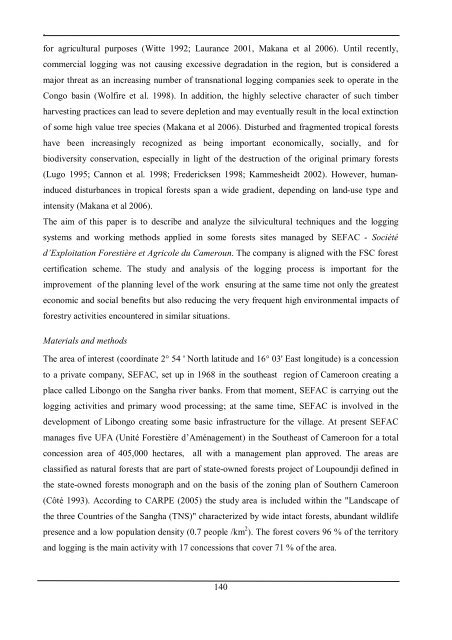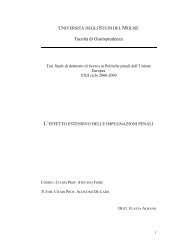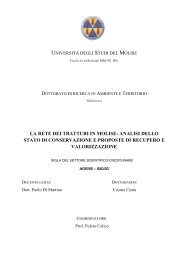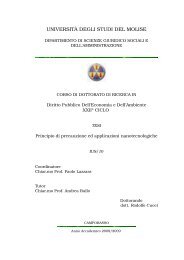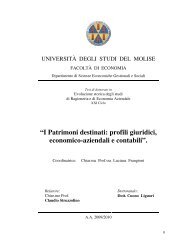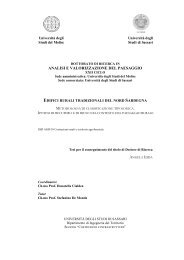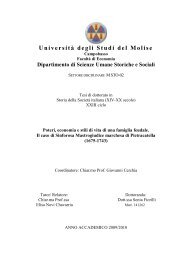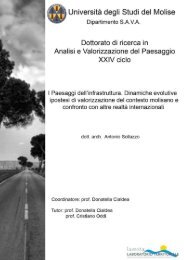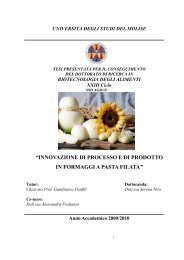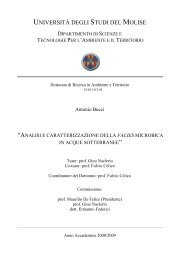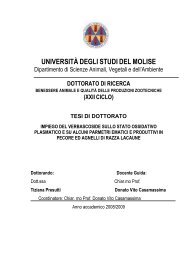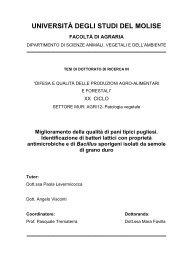Innovazioni nella Gestione Forestale Sostenibile - Repository of ...
Innovazioni nella Gestione Forestale Sostenibile - Repository of ...
Innovazioni nella Gestione Forestale Sostenibile - Repository of ...
You also want an ePaper? Increase the reach of your titles
YUMPU automatically turns print PDFs into web optimized ePapers that Google loves.
.<br />
for agricultural purposes (Witte 1992; Laurance 2001, Makana et al 2006). Until recently,<br />
commercial logging was not causing excessive degradation in the region, but is considered a<br />
major threat as an increasing number <strong>of</strong> transnational logging companies seek to operate in the<br />
Congo basin (Wolfire et al. 1998). In addition, the highly selective character <strong>of</strong> such timber<br />
harvesting practices can lead to severe depletion and may eventually result in the local extinction<br />
<strong>of</strong> some high value tree species (Makana et al 2006). Disturbed and fragmented tropical forests<br />
have been increasingly recognized as being important economically, socially, and for<br />
biodiversity conservation, especially in light <strong>of</strong> the destruction <strong>of</strong> the original primary forests<br />
(Lugo 1995; Cannon et al. 1998; Fredericksen 1998; Kammesheidt 2002). However, human-<br />
induced disturbances in tropical forests span a wide gradient, depending on land-use type and<br />
intensity (Makana et al 2006).<br />
The aim <strong>of</strong> this paper is to describe and analyze the silvicultural techniques and the logging<br />
systems and working methods applied in some forests sites managed by SEFAC - Société<br />
d’Exploitation Forestière et Agricole du Cameroun. The company is aligned with the FSC forest<br />
certification scheme. The study and analysis <strong>of</strong> the logging process is important for the<br />
improvement <strong>of</strong> the planning level <strong>of</strong> the work ensuring at the same time not only the greatest<br />
economic and social benefits but also reducing the very frequent high environmental impacts <strong>of</strong><br />
forestry activities encountered in similar situations.<br />
Materials and methods<br />
The area <strong>of</strong> interest (coordinate 2° 54 ' North latitude and 16° 03' East longitude) is a concession<br />
to a private company, SEFAC, set up in 1968 in the southeast region <strong>of</strong> Cameroon creating a<br />
place called Libongo on the Sangha river banks. From that moment, SEFAC is carrying out the<br />
logging activities and primary wood processing; at the same time, SEFAC is involved in the<br />
development <strong>of</strong> Libongo creating some basic infrastructure for the village. At present SEFAC<br />
manages five UFA (Unité Forestière d’Aménagement) in the Southeast <strong>of</strong> Cameroon for a total<br />
concession area <strong>of</strong> 405,000 hectares, all with a management plan approved. The areas are<br />
classified as natural forests that are part <strong>of</strong> state-owned forests project <strong>of</strong> Loupoundji defined in<br />
the state-owned forests monograph and on the basis <strong>of</strong> the zoning plan <strong>of</strong> Southern Cameroon<br />
(Côté 1993). According to CARPE (2005) the study area is included within the "Landscape <strong>of</strong><br />
the three Countries <strong>of</strong> the Sangha (TNS)" characterized by wide intact forests, abundant wildlife<br />
presence and a low population density (0.7 people /km 2 ). The forest covers 96 % <strong>of</strong> the territory<br />
and logging is the main activity with 17 concessions that cover 71 % <strong>of</strong> the area.<br />
140


